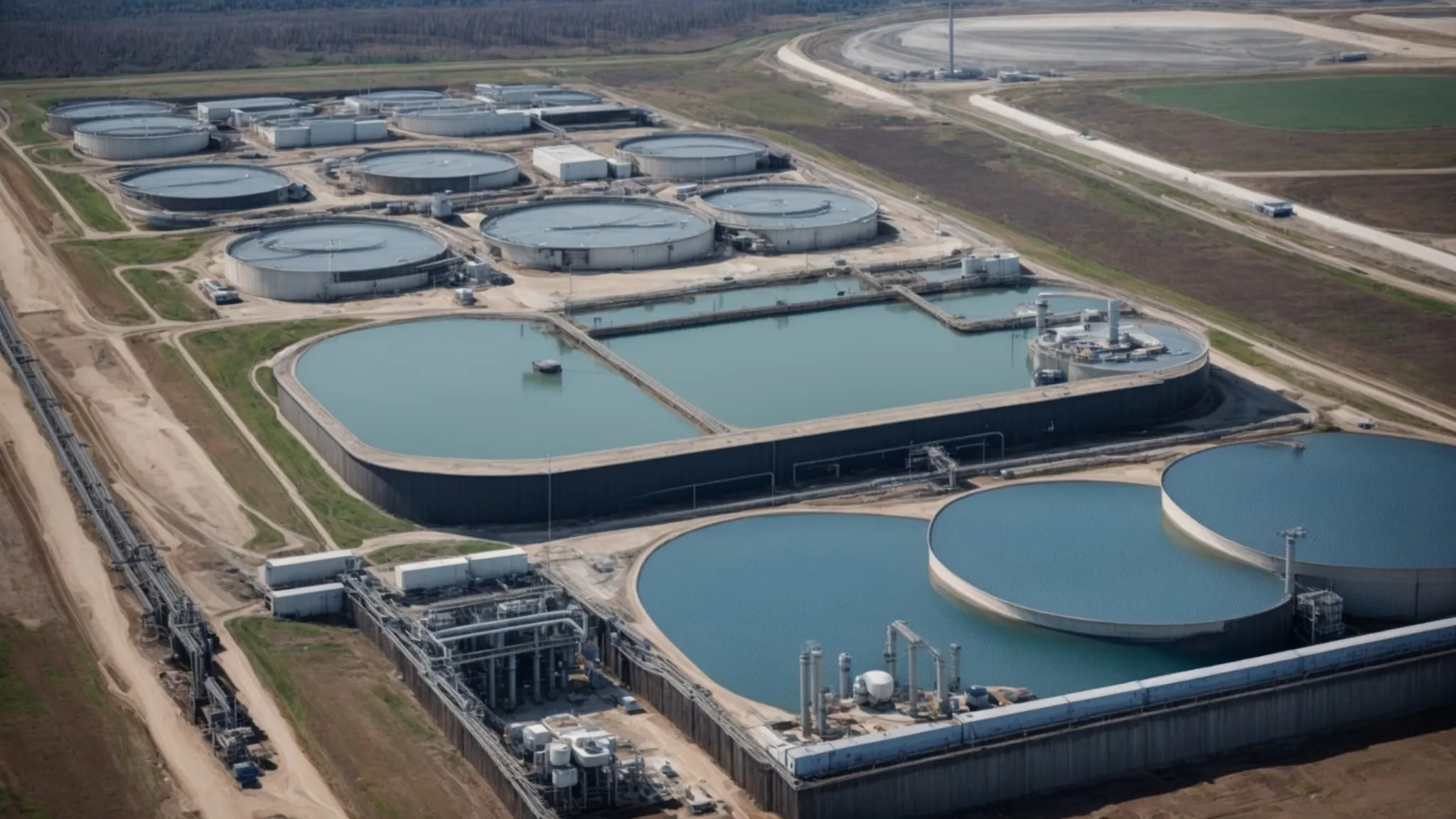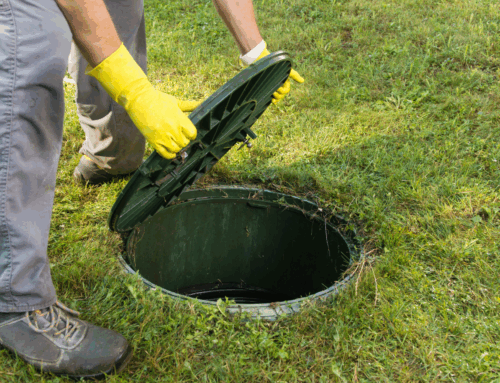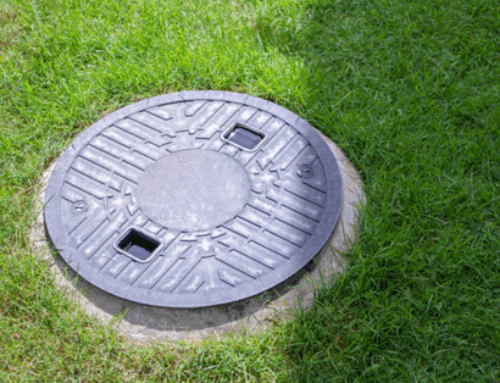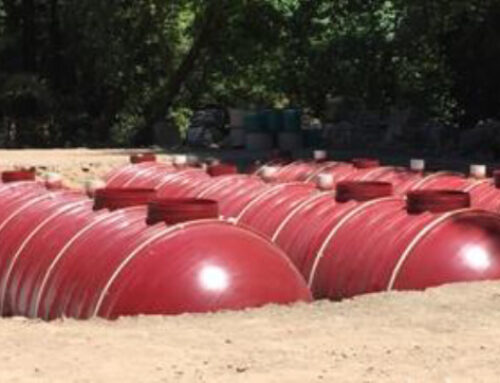Optimizing Wastewater Management: BioMicrobics Solutions for Septic Drain Field Design — Effective wastewater management hinges on robust septic drain field design – a landscape where precision, ecological considerations, and technological integration must converge seamlessly. At the heart of this convergence lies the septic tank, a critical component that interfaces with both water treatment and disposal.
BioMicrobics systems push the envelope, replacing traditional concrete with high-quality, durably constructed plastic components that interface seamlessly with a variety of soils, ensuring longevity and performance. These systems are designed not just to meet, but to exceed environmental standards, transforming how residential and commercial properties deal with waste.
In this article, we will uncover the technological advances BioMicrobics offers to enhance and optimize septic drain field designs for cleaner, greener, and more efficient water management solutions.
- Understanding Septic Drain Field Design for Efficient Wastewater Management
- The Advantages of BioMicrobics Systems in Septic Design
- Steps in Installing a BioMicrobics Septic Drain Field
- Maintenance Tips for BioMicrobics Septic Systems
- Upgrading to a BioMicrobics System for Existing Septic Fields
- Innovative BioMicrobics Solutions for Challenging Sites
- Conclusion
Understanding Septic Drain Field Design for Efficient Wastewater Management
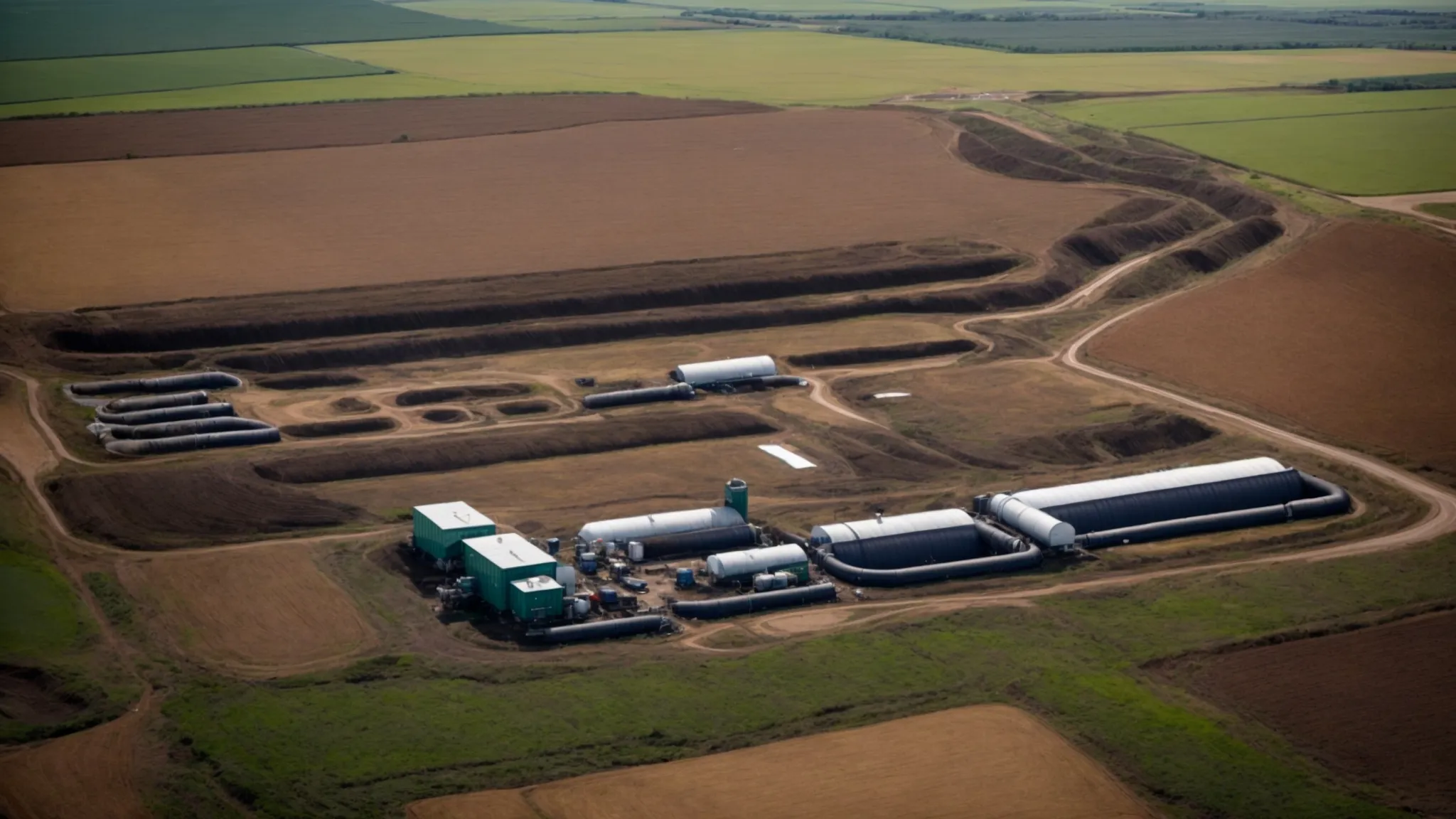
Effective sewage treatment relies heavily on the aptitude of septic systems to process and percolate wastewater back into the environment without harm. Central to this is the septic drain field, where liquid effluent from the septic tank is further purified by soil-based filtration. For those tasked with designing these vital components of rural and suburban plumbing infrastructures, a keen understanding of several critical factors is imperative.
First, evaluating soil conditions stands as a requisite step in ensuring proper filtration and prevention of contamination. Additionally, calculating the right drain field size is not just a suggestion—it is a necessity for accommodating the daily sewage volume and safeguarding against system overload.
Lastly, septic systems’ roles in the broader ecosystem take center stage as their impact on groundwater is scrutinized; this entails a careful study of how effluent released into the soil influences local water tables and environmental health. Together, these topics form the cornerstone of responsible septic drain field design and ultimately determine the effectiveness and sustainability of sewage treatment protocols.
Evaluating Soil Conditions for Septic Systems
Assessing the soil profile where a septic system will be introduced forms the blueprint of effective septic drain field design. Soil evaluation goes beyond basic identification; it encompasses analyzing the permeability, which dictates how quickly effluent will filter through the substratum, and identifying any restrictive layers that may impede this flow or require alternative drainage solutions like a pump.
Designers must consider variables such as soil texture, structure, and absorption capabilities to determine the feasibility of a drain field site. These assessments shape the engineering decisions regarding the layout of the trench, the depth of the effluent application, and the choice between gravity-fed or pump-assisted systems for ensuring the optimum distribution of effluent into the drain field.
Calculating the Right Drain Field Size
Accurate determination of the necessary size for a drain field is pivotal, taking into account the daily volume of wastewater that needs to be managed. Proper calculations ensure that the blend of drainage materials like gravel and sand around the perforated pipes has the surface area to support water dispersal without risking saturation above the water table, maintaining a balance that protects the efficiency of the filtration system.
To avoid scenarios where effluent surfaces or contaminates groundwater sources, the proximity of the drain field to the local water table must be carefully considered. Designing with an awareness of variations in water levels throughout different seasons ensures that pipes are placed at an optimal depth that allows for unimpeded flow of treated water through the soil, thus ensuring the long-term success of the wastewater management system.
Impact of Septic Systems on Groundwater
The role septic systems play in the preservation of groundwater quality is substantial, demanding that engineers meticulously design the filtration process to minimize negative impacts. Groundwater, which serves as a crucial source of potable water, requires protection from contamination via effectively designed septic solutions, such as robust sand filters that enhance the purification of effluent before it ever reaches the water table.
A septic system’s health hangs in the balance when the effluent’s interaction with groundwater is not properly managed. It becomes imperative for engineers to incorporate advanced sand filter technology that ensures refined filtration, thereby upholding the integrity of groundwater resources and steadfastly protecting environmental health.
Navigating the complexities of septic drain field design sets the stage for an advanced revelation: the BioMicrobics systems. Embracing this next echelon in septic solutions offers an array of benefits poised to redefine efficient wastewater management.
The Advantages of BioMicrobics Systems in Septic Design

Within the realm of septic drain field design, BioMicrobics systems stand as a formidable answer to the complexities of wastewater management. These systems, rooted in innovative engineering, offer a substantial upgrade in the removal of pollutants, ensuring that wastewater from toilets and other sources is treated with superior efficiency.
The intelligently compact design of BioMicrobics models drastically reduces the required spatial footprint, a benefit especially relevant in areas where land is at a premium. Furthermore, the strength provided by concrete construction coupled with the system’s ability to regulate pressure distribution translates into enhanced longevity and durability.
Such attributes position BioMicrobics systems not merely as an option but as a cornerstone in resilient and sustainable septic system design.
Enhanced Pollutant Removal Capabilities
The BioMicrobics system introduces a pivotal advancement in septic drain field technology with its exceptional ability to remove a wider range of pollutants. Through a sophisticated process that harnesses the natural breakdown capabilities of bacteria, the system ensures that effluents are subject to rigorous purification before being reintroduced into the environment.
With robust construction, these systems are engineered to accommodate large gallons of wastewater while maintaining a small spatial footprint akin to a wetland. This design not only simulates the high-efficiency filtering properties of natural wetlands but also allows for the system to treat wastewater effectively within a condensed area, conserving valuable land space with every square that utilizes a wastewater treatment system company.
Maximization of space, minimizing land use per square foot
- Advanced bacterial breakdown for comprehensive pollutant removal
- Durable construction for long-term performance
- Efficient processing of large volume measured in gallons
- Replication of wetland’s filtration efficiency in a compact system
Reduced Footprint and Space Requirements
The BioMicrobics system advocates for a transformative approach to septic drain field design by leveraging results from the percolation test to optimize spatial requirements. This innovation allows for a smaller footprint even in complex soil conditions where traditional gravity systems might demand more expansive layouts.
In residential zones where each additional bedroom typically necessitates an expansion of the septic drain field, BioMicrobics systems shine by maintaining a solid performance without proportionately increasing land use. Through this, homeowners gain a viable, environmentally responsible percolation solution that respects their property boundaries and local regulations.
Longevity and Durability of BioMicrobics Systems
The robustness of BioMicrobics systems shines through in the integration of durable valves that withstand the rigors of greywater and waste filtration. Withstanding the constant flow and potential abrasiveness of waste, these high-quality valves ensure sustained performance and reliability over many years.
Moreover, the BioMicrobics systems’ design incorporates elements akin to those found in advanced javascript frameworks, prioritizing resilience similar to that of a well-constructed roof. This innovative approach to septic system design delivers steadfast durability, guarding against breakdowns and ensuring longevity in wastewater management endeavors.
Understanding the advantages of BioMicrobics systems is just the beginning of transforming septic functionality. Now, let’s embark on the practical journey of installing a BioMicrobics septic drain field, step by step.
Steps in Installing a BioMicrobics Septic Drain Field
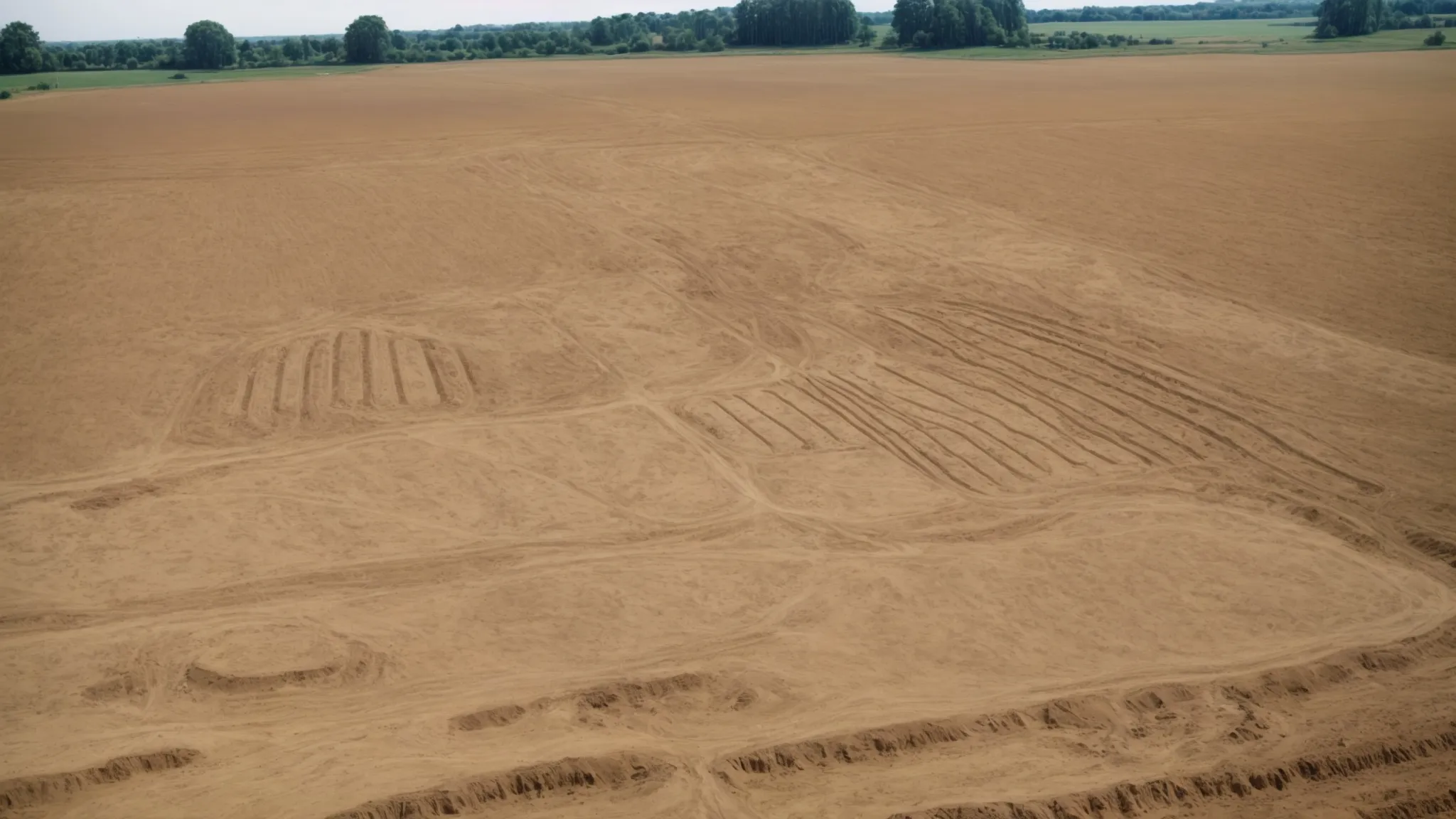
At the heart of sustainable wastewater treatment lies the adept implementation of septic systems, with BioMicrobics offering revolutionary solutions tailored for effective management of domestic effluent. Prior to installation, a series of meticulous pre-installation assessments and planning are necessary, ensuring that factors such as proximity to trees, which might affect the root intrusion into the drain field, and the future placement of amenities like showers or a dry well, are carefully considered.
Site preparation then follows, requiring astute excavation tips to avert any disruption to the surrounding ecosystem. Once the groundwork is laid, the precision installation of BioMicrobics components becomes the focal point. Correct installment is critical to ensure that the system functions at peak efficiency, and consistent inspection and evaluation of the absorption field’s integrity play a pivotal role in maintaining the wastewater management apparatus’s long-term reliability and environmental compliance.
Pre-Installation Assessments and Planning
Prior to the physical implementation of a BioMicrobics septic system, rigorous site evaluations are critical. Professionals meticulously measure each inch of the prospective area, with a focus on soil composition—particularly the presence of clay which influences the waterproofing and drainage capabilities of the ground. Careful planning at this stage is decisive in preparing for a septic drain field that can withstand the vagaries of weather and heat fluctuations, ensuring lasting functionality.
Another fundamental aspect of the pre-installation process is the consideration of vegetation. System designers must contemplate the species and placement of plant life to prevent root infiltration that could compromise the system’s integrity. This careful orchestration of flora, in concert with the precise arrangements of the septic components, forms a symbiotic environment conducive to both efficient wastewater management and the preservation of natural habitats.
Site Preparation and Excavation Tips
Site preparation heralds the first step in the physical journey of a septic drain field installation, where the area designated for the BioMicrobics system undergoes meticulous clearing. This phase is about more than digging; it entails gathering critical information about the land to inform the excavation. Every scoop of earth must be considered to prevent future complications such as leaks, which could disrupt the digestion process of waste.
In the subsequent excavation, concise action is paramount to allocating space for the BioMicrobics units. Cutting through the earth requires precision to establish a stable base capable of handling the forthcoming stream of wastewater. Taking this step ensures the integrity of the system, paving the way for efficient waste digestion and preventing any encroachment upon surrounding land use.
Installing BioMicrobics Components Correctly
The right installation of BioMicrobics components is a technical endeavor that requires precision and attention to detail. Ensuring each part is placed correctly, with geotextile fabric for added filter protection, minimizes the chances of a system failure due to flooding or clogging. Close attention to the configuration helps maintain a steady flow of oxygen, crucial for the breakdown of waste within the system.
Specifically catering to sites that mimic a constructed wetland or require a mound system, the BioMicrobics installation should reflect the intricacies of these unique environments. Careful component placement allows for effective wastewater treatment, preventing over-saturation of the soil and ensuring proper function even in the event of heavy rainfall and potential flood scenarios.
With the drain field securely in place, attention now shifts to ensuring your BioMicrobics system runs flawlessly for years. Maintaining peak performance is simpler than you think – let’s uncover the secrets to a long-lasting septic setup.
Maintenance Tips for BioMicrobics Septic Systems
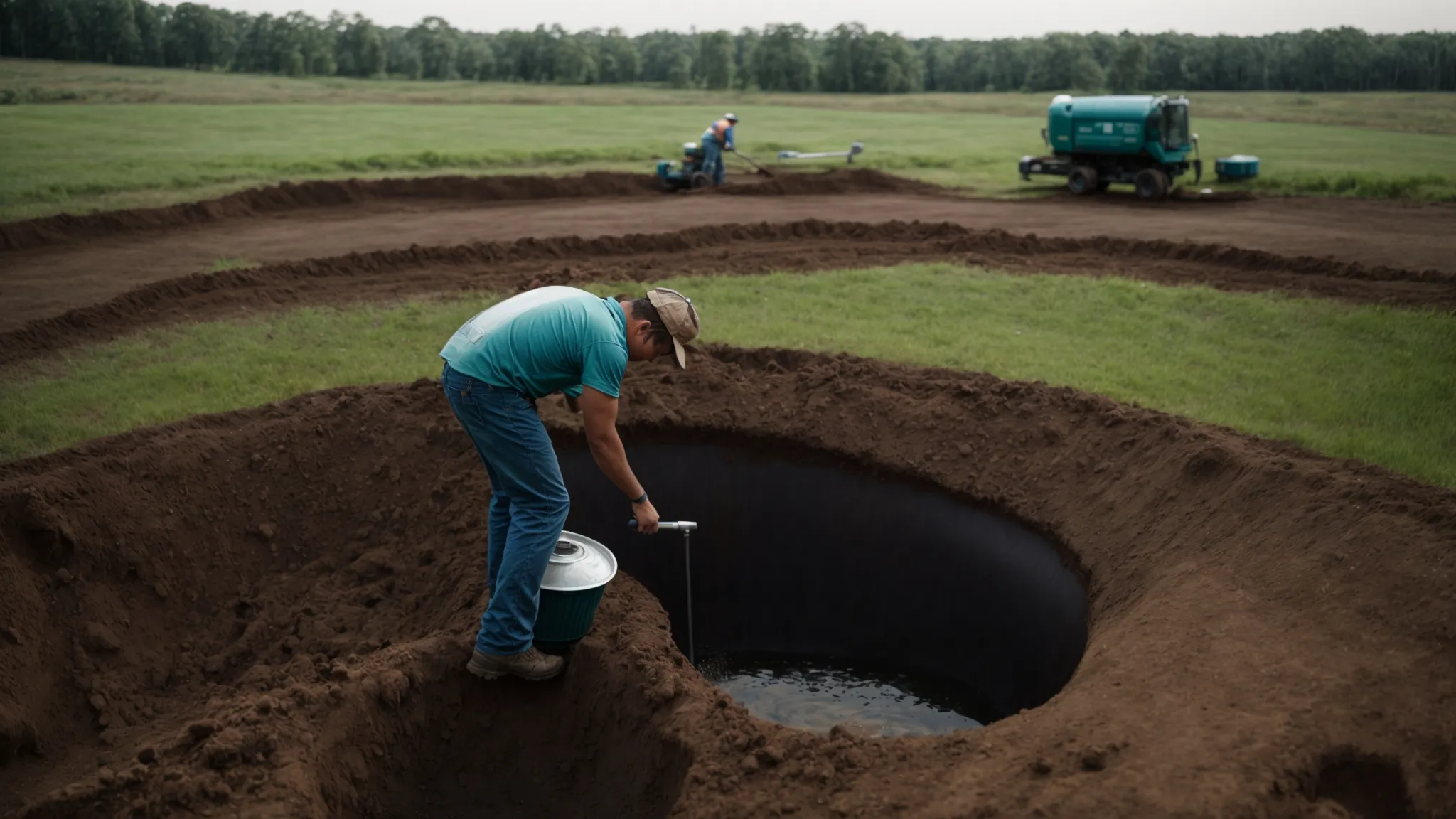
Ensuring the longevity and performance of a septic drain field hinges on diligent maintenance of the system. BioMicrobics septic solutions, renowned for their efficiency in treating wastewater, also require an informed approach to upkeep. Clear protocols for periodic inspections safeguard against problematic infiltration, which can arise when surface water, potentially swollen by rain, seeps into the system.
Integrating loam and other soil enhancements can be part of an effective care strategy, reducing the vulnerability of the drain field to such threats. Furthermore, adhering to best practices in feeding the system, which includes the careful introduction of waste materials, helps to maintain balance and avoid complications. Addressing common issues such as blockages or corrosion before they escalate into costly repairs not only preserves the system’s integrity but also ensures ongoing optimization of wastewater management processes.
Regular Inspection Schedules
Adherence to structured inspection timetables is vital for maintaining the integrity of BioMicrobics septic systems, particularly as they affect sources of drinking water. Regular evaluations monitor the percolation and absorption efficacy, ensuring nearby lake ecosystems are shielded from potential effluent contamination.
To preserve the system’s operational longevity, specialists assess factors such as the drain field’s length and its relationship to the underlying bedrock, along with soil permeability, during routine checks. These measures are essential to prevent system malfunctions that could impact the quality and safety of drinking water resources. Septic system drainfield repair services play a crucial role in maintaining the efficacy and reliability of these systems.
Best Practices in System Care and Feeding
Employing cutting-edge technology in the maintenance of a BioMicrobics septic system is paramount for optimizing its function and longevity. By incorporating fiberglass components that are resistant to corrosion, the system maintains its structural integrity, ensuring seamless processing and reduction of pathogens.
Attentive analysis of soil type is critical when feeding waste into the system; this careful management is essential for preventing over-saturation and for fostering an environment where microorganisms can thrive and effectively treat wastewater. Regularly avoiding the compaction of the drain field by heavy vehicles contributes to the long-term efficiency and health of the septic system.
Troubleshooting Common Issues
When BioMicrobics septic systems face complications often originating from sump pump failures or washing machine overflows, effective troubleshooting is key. Experts in Washington recommend examining the connections to these appliances as a start, ensuring that the wastewater flow remains uninterrupted and the system’s efficiency is not compromised.
Troubleshooting a BioMicrobics septic system also involves a close inspection of the ventilation pathways, which are crucial for maintaining the aerobic balance needed for waste breakdown. Blockages in these airways can lead to a cascade of issues; therefore, it is critical to address any signs of poor ventilation promptly to restore proper system function. Aerobic treatment plays a central role in this process.
Maintaining your BioMicrobics septic system ensures longevity and efficiency over the years. Yet, embracing an upgrade can redefine your system’s performance, seamlessly integrating with existing septic fields.
Upgrading to a BioMicrobics System for Existing Septic Fields
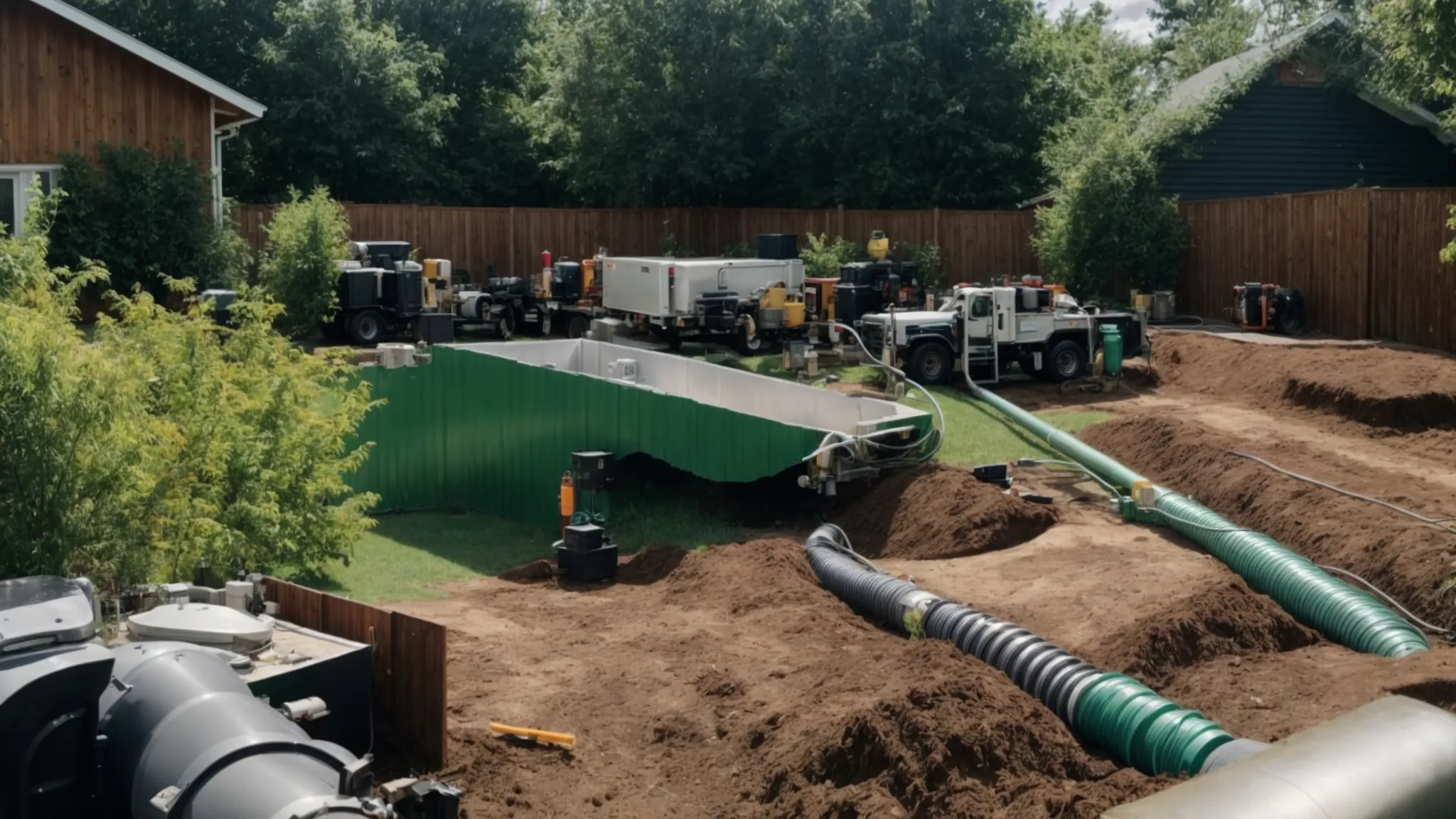
Property owners grappling with the nuances of on-site wastewater treatment often arrive at a crucial juncture where upgrading their septic system becomes more than just an option—it becomes essential for bolstering efficiency and environmental stewardship. Against the lush backdrop of Missouri, where xeriscaping practices intermingle with traditional landscaping to conserve water, the shift from a standard septic layout to a BioMicrobics system promises to harmonize with the natural processes of evapotranspiration, infinitesimally affecting the juxtaposition of residential life and ecological balance.
Moreover, for homeowners weary of the incessant roll of the service truck or the constant need to sink funds into antiquated septic repairs, BioMicrobics presents an innovative way forward. This upgraded approach to wastewater management redefines the flow of effluent treatment, integrating seamlessly into existing septic fields, with cost-benefit analyses laying bare the long-term financial and environmental gains of such a transition.
When to Consider Upgrading Your Septic System
The decision to upgrade to a BioMicrobics system arises when the existing septic tank drain field layout begins to falter due to soil compaction or inefficient filtration practices such as the use of crushed stone. Homeowners who observe decreased performance in their residential septic tank drain field layout may find that upgrading to a more sophisticated design, like that offered by BioMicrobics, dramatically improves their wastewater management.
Contemplating an upgrade to a BioMicrobics system should also be a top priority when considering the lifespan and environmental impact of one’s leach field septic system design. If the current system necessitates frequent maintenance or fails to meet local regulations, transitioning to a BioMicrobics system can offer a long-term solution that efficiently manages household waste while minimizing ecological disruption.
The Conversion Process From Traditional to BioMicrobics
The transition from a traditional septic tank and drain field layout to a BioMicrobics system begins with a comprehensive analysis of the existing onsite sewage facility. Experts in the field meticulously evaluate the size of the septic drain field and the size of the septic field, determining the compatibility and adjustments necessary to seamlessly integrate advanced BioMicrobics technology.
Converting an outdated cesspit or an overburdened traditional septic system emphasizes a tailored approach to suit each unique property. This includes modifying the current infrastructure to embrace BioMicrobics’ compact and efficient design, which offers a significant uplift in wastewater processing capabilities within the same footprint.
Cost-Benefit Analyses for Upgrades
Undertaking the financial analysis of upgrading to a BioMicrobics system implicates weighing the initial investment against the long-term savings in sanitary sewer operations and fecal sludge management. By reducing the frequency of system failures that necessitate emergency interventions, property owners may notice a diminishing reliance on costly repairs, thus garnering monetary benefits aligning with the system’s sustainable operational model.
The introduction of a BioMicrobics system, which adeptly handles the breakdown of organic materials such as petroleum through anaerobic digestion, further diminishes the financial burden linked with traditional septic solutions. Moreover, its superior design mitigates the risk of contaminants reaching the storm drain, securing environmental compliance that can preempt potential fines and preserve local water quality, articulating a clear economic advantage for conscientious homeowners.
Transitioning from a traditional septic setup to a BioMicrobics system signals not only the commitment to enhanced efficiency but also marks the homeowner’s dedication to sustainability. As this evolution in wastewater management takes place, attention must turn to the innovative BioMicrobics solutions specifically tailored for sites that present unique challenges.
Innovative BioMicrobics Solutions for Challenging Sites
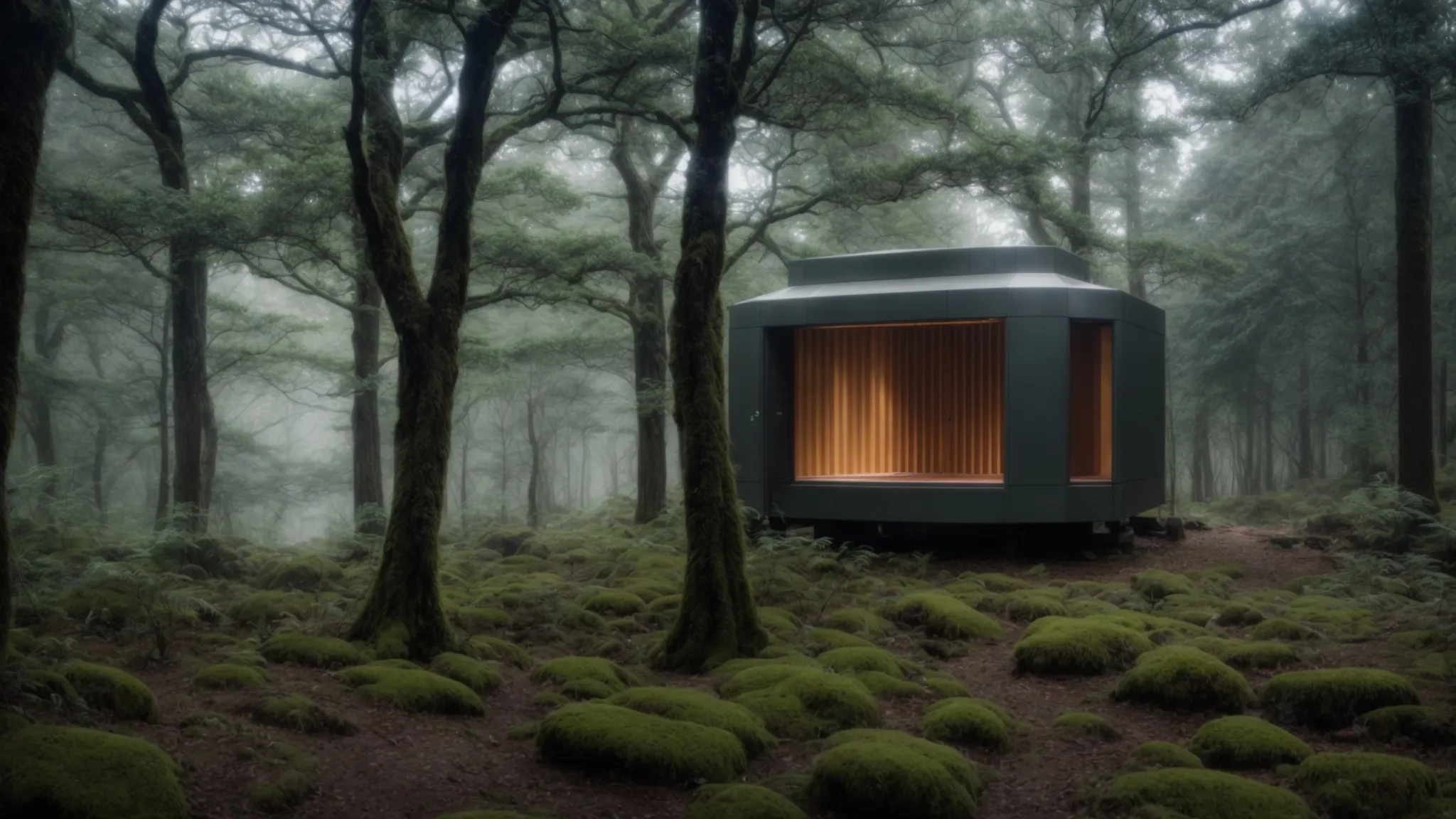
Integrating BioMicrobics solutions into septic drain field design reveals their aptitude for overcoming challenges present in diverse environments, marked by intricate site conditions. These systems deliver vital wastewater treatment options that uphold the balance between technological efficiency and environmental sensitivity. For locations grappling with high water tables, BioMicrobics introduces designs boasting enhanced porosity to navigate the innate complexities of such terrains.
In cases where available land is limited or the site is hemmed in by physical constraints, the compact nature of these systems circumvents spatial limitations without compromising treatment efficacy. Furthermore, BioMicrobics systems underscore an environmentally friendly approach, adeptly accommodating stringent environmental restrictions while ensuring the refined treatment of wastewater and effective dispersal of septic tank effluent.
Solutions for High Water Table Areas
Areas with a high water table pose a significant challenge for any conventional septic field layout; in these settings, BioMicrobics systems offer an advantageous alternative. By carefully engineering a drain field layout that accounts for the closer proximity of water, these systems prevent sewage sludge from infiltrating and contaminating groundwater.
The leach field layout becomes fundamental in regions where seasonal water table fluctuations could compromise septic system integrity. BioMicrobics has risen to this challenge, designing septic drain field layouts that function effectively under such adverse conditions without disrupting the ecological balance.
Systems Designed for Small or Restricted Sites
Addressing the dilemmas faced by sites constrained by rocky terrain, BioMicrobics devises compact septic solutions that alleviate the common challenges associated with decentralized wastewater systems. These systems efficiently process sludge and reduce the potential for surface runoff, embodying the adaptability necessary for seamless operation in physically limited spaces.
The integrity of these carefully crafted septic arrangements extends the lifespan of drain fields, even where expansion is not possible, negating the need for frequent application of drain cleaner. BioMicrobics’ innovative approach ensures that environmentally responsible wastewater management is attainable, regardless of space limitations or the density of underlying rock.
Addressing Environmental Restrictions With BioMicrobics
Within the realm of wastewater management, environmental restrictions can present substantial hurdles, yet BioMicrobics systems transcend these limitations. Their designs negate the risk of failure by expertly managing blackwater, typically characterized by its high nutrient and pathogen content. Leveraging advanced filtration, BioMicrobics systems maintain regulatory compliance while addressing the unique demands of varied residential and commercial landscapes.
The meticulous engineering of BioMicrobics systems allows for precision management of wastewater volume, essential in areas with stringent environmental laws. These systems incorporate mechanisms that optimize evaporation and facilitate the effective breakdown of organic compounds, reducing the diameter of the drain field required and thus minimizing the interference with sensitive ecosystems.
By meticulously considering every aspect of design and functionality, BioMicrobics transforms the challenges of stringent regulations into a testament to sustainable innovation. Their systems exemplify an ecological synergy, where technology and the natural process of evaporation work in concert to protect our vital water resources.
Conclusion
BioMicrobics systems represent a pivotal leap in septic drain field design, bringing robust wastewater management to challenging environments with innovative solutions. By enhancing pollutant removal and reducing spatial requirements, these systems extend the functionality and lifespan of septic fields.
The advanced technology underpinning BioMicrobics not only optimizes the breakdown of waste but also ensures environmental compliance, safeguarding water resources. As such, transitioning to BioMicrobics systems is integral for property owners aiming for sustainability and efficiency in wastewater treatment.
Additionally, BioMicrobics offers customized wastewater treatment solutions to niche markets like wineries. The staff at our winery wastewater treatment company is dedicated to creating robust infrastructures for on-site wastewater treatment. This is demonstrative of the FITT®-for-purpose philosophy. Of course, this is necessary to keep both communities and the environment healthy. BioMicrobics is well-positioned to bring together international projects and partners to offer a client-focused service thanks to its developing global distributor network.
For more information about our company, contact us here or call (800) 753-3278.

Additionally, BioMicrobics offers customized wastewater treatment solutions to niche markets like wineries. The staff at our winery wastewater treatment company is dedicated to creating robust infrastructures for on-site wastewater treatment. This is demonstrative of the FITT®-for-purpose philosophy. Of course, this is necessary to keep both communities and the environment healthy. BioMicrobics is well-positioned to bring together international projects and partners to offer a client-focused service thanks to its developing global distributor network.
For more information about our company, contact us here or call (800) 753-3278.
